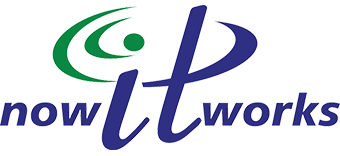- How to know when your using the wrong tools (such a spreadsheets) and what to do instead
- The top ways to keep your SMB data organized
- How you can transition your business methods to achieve efficiency without missing a beat
How Many SMBs Strive to Be Organized
Spreadsheets are the Swiss Army knives of office tools. Many of us use them to maintain all kinds of information or data. We create lists of roles and employees, lists of services, lists of products, lists of clients, even lists of financial transactions—all for good reason.
After all, spreadsheets can combine text and quantitative data in a form that allows both simple and complex analyses. This gives managers a powerful tool to learn from the past what has succeeded or failed and to forecast what might be more effective in the future. Data in a spreadsheet can be changed, manipulated, and even linked to data in other spreadsheets. While there is a bit of a learning curve, most find using a spreadsheet to be relatively simple.
Spreadsheets enable users to slice and dice their data in different ways. For instance, you can easily pull up all of the financial transactions that pertain to a specific client or check on the productivity of specific employees. The smaller the business, the easier it is to maintain spreadsheets for a variety of tasks.
Drawbacks to Consider
Nevertheless, there are drawbacks and risks to using spreadsheets to stay organized.
- When different users want to analyze a spreadsheet’s data for various purposes, they must alter the spreadsheet to do so. That means that there can be several variations, and keeping track of them among team members poses challenges. Members of your sales and marketing teams might use the same data very differently, and some might want to see all of that on a smartphone.
- Entering or changing data in a spreadsheet opens the possibility for error. If one cell is altered or if a formula is changed, the calculations that the spreadsheet performs can be out of whack. And if the altered formula is complex, finding the error can be very difficult. Errors that produce inaccurate information can kill your business.
- Spreadsheets don’t scale well. While current spreadsheets can contain a lot of data (MS Excel can contain over 1 million rows and 65,000 columns), processing that much data can easily overpower your business’s computing power. Computers that hang destroy efficiency.
There Are Better Ways to Stay Organized
Large enterprises have generally shifted to database software. The good news is that database management is now within the reach of small businesses. That means that small businesses can tap the power of process management software and platforms that use relational databases instead of spreadsheets.
- Organize and Visualize – Process management platforms such as Airtable or Monday offer multiple ways of organizing and viewing data so that users can track progress across different functions within a company. Without writing any code(!), team members can use templates to create different views for analyzing information. They can even create their own templates.
- Manage Workflow – Managers can track which team members are assigned to which projects and can monitor workflow progress. Moreover, they can view that information in calendar format, Kanban board, or other formats. Built-in or custom filters display only the information needed.
- Create Reports – Relational databases also allow you to query your data more easily and to create reports. You can use built-in reports for some functions, or you can create custom reports and save them for future use—a major advantage over spreadsheets. You can even choose to update reports in real time.
- Collaborate – Such software allows team members who perform specific roles to engage with one another. Marketing teams can track the results of sales teams in real time to gauge which marketing approaches are more effective. Members of the same or different teams can collaborate with one another easily, thereby preventing a “silo” effect. Internal communication improves.
- Prevent/Correct Errors – By using databases, managers can also track who has entered or changed data and when. This allows better correction of errors.
- Automate – Once your business establishes its database, many processes can be automated. When a client submits a form, sends an email, or communicates in some other way, the software can record that information and send a notice to the appropriate team member. (See our blog post on Automation for Small Business for more.)
- Return to Spreadsheet – Many databases, as good as they are, don’t always allow you to slice and dice the data in the exact way that you need it. Although, lots of them will allow you to export the data into a spreadsheet that you can manipulate.
How to Make the Transition
We’re not saying that spreadsheets are bad. They’re not. They are very useful for some purposes, and you can often transfer their data to your database program.
Nevertheless, your database program will be much more robust. It will give you better analytical tools, reporting capability, process management capability, improved communications, and collaboration. Here’s how to go about making the transition.
- Identify your team members and their roles: decision makers, managers, data entry persons, salespeople, marketing staff, etc. (The fancy name for this is the Responsibility, Accountability, Consulted and Informed [RACI] matrix.)
- Specify the “absolute requirements” that your team members need to do their jobs. Be sure to consult your staff so that you don’t miss something important.
- List some nice-to-have features that your team would like to include.
- Look for software that is relevant to your business sector and schedule demos so that you and your team can evaluate your choices.
- Ask for feedback from others in your sector who are using the software that you’re considering.
- Ask your internal IT team to evaluate how your current procedures can be integrated with the new software. Also consider how much and what kind of training will be necessary for staff to use the new database program to best advantage.
If you don’t have sufficient IT resources internally, reach out for help. This sort of transition requires some expertise. Don’t be afraid to ask for it.
And remember that Now IT Works stands ready to assist you at any stage in the process. Contact us to learn more.

